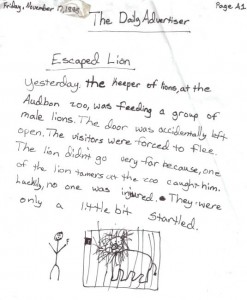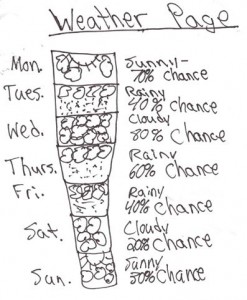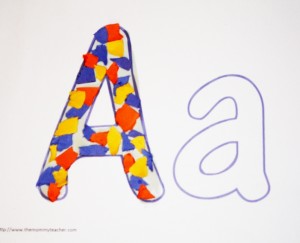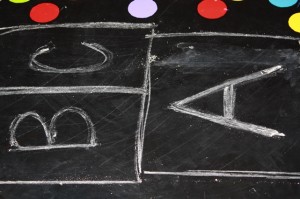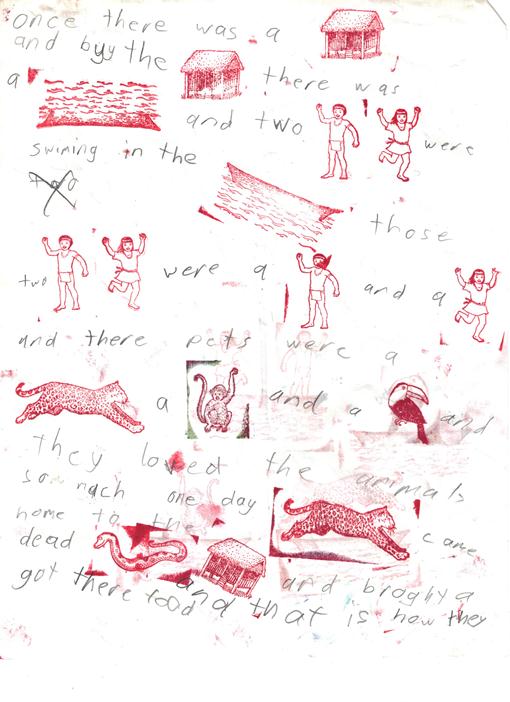A lot of parents assume their super verbal and proficient little ones have a wider speaking vocabulary than listening vocabulary. It is not that your little one doesn’t “know” the words they are looking for, but there are certain language concepts that are not yet part of their speaking vocabulary.
For instance, if I asked your little one to look “under” the table to find my pencil, he or she probably wouldn’t hesitate. Your little one probably knows the word “under” in context enough to search in the direction that I am referring to. Or, if I am “under” a table and I asked your little one where I was he or she might state, “Under the table” using the position word “under.” But, in the context that I had a doll “under” something and asked your little one to describe where the doll is in their words. He/she may or may not use words to describe directionality like (under, next to, through, between, back, on top, over, above, etc.)
So, to work on developing this skill through a natural progression from head knowledge to incorporating these words into their oral voacbulary and using them abstractly, I am going to give you a series of position word activities using pictures of Casey’s little ones because she is such an awesome mommy teacher – check out her kidspiration blog 🙂
1) Playing Copy Cat Games: Casey loves to play these games with her little “Leyson man.” This is very similar to “simon says” – ask your little one to copy you as you place your hands “Over” your head, “between” your knees, “beside” your cheeks, etc.
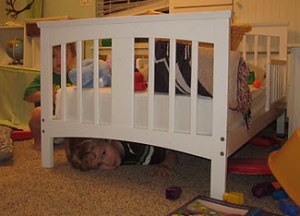
2) Hide and Seek: Hide a toy and give directions using position words for your little one to find it, “The block is between the couch pillows.”
3) Act it out with your whole body: “Can you hide under the bed? Can you climb on top of the stool? Can you jump over the pillow?” This part of the activity helps little ones meet the needs of learning through movement!Casey’s little one, Leyson, practicing position words with his farm animals!
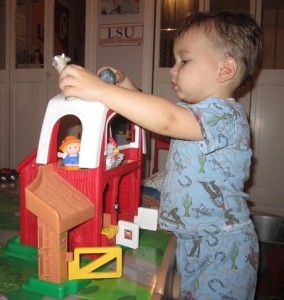
4) Act it out with toys: “Can your cow jump over the farmhouse? Can your pig squeeze through the doorway?” This helps the little ones needs to learn in a hands-on way!
5) Use words to give directions: Place something (like a doll’s purse) between two chairs, then dialogue with your little one “Pretend that I cant find the Barbie’s favorite purse, but you know where it is! Without showing me, can you use your words to tell me where it is?”

